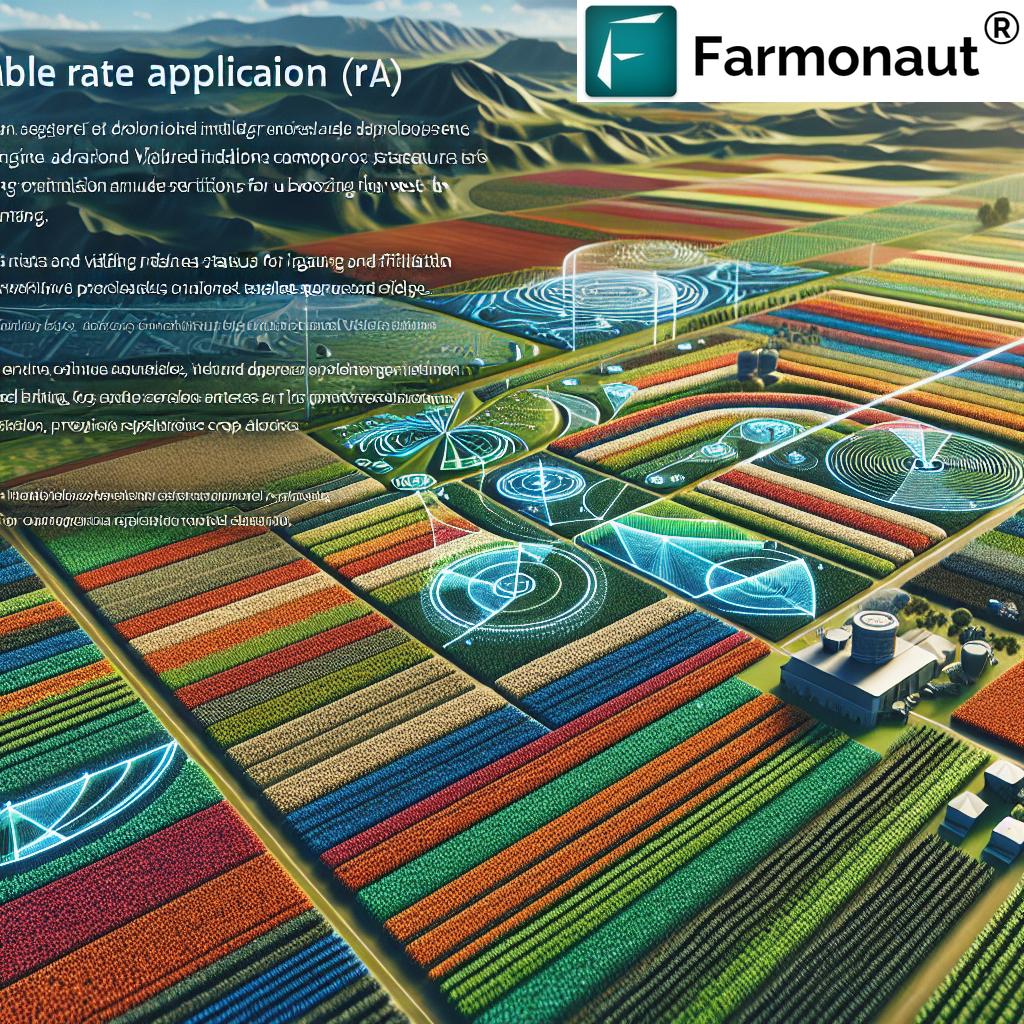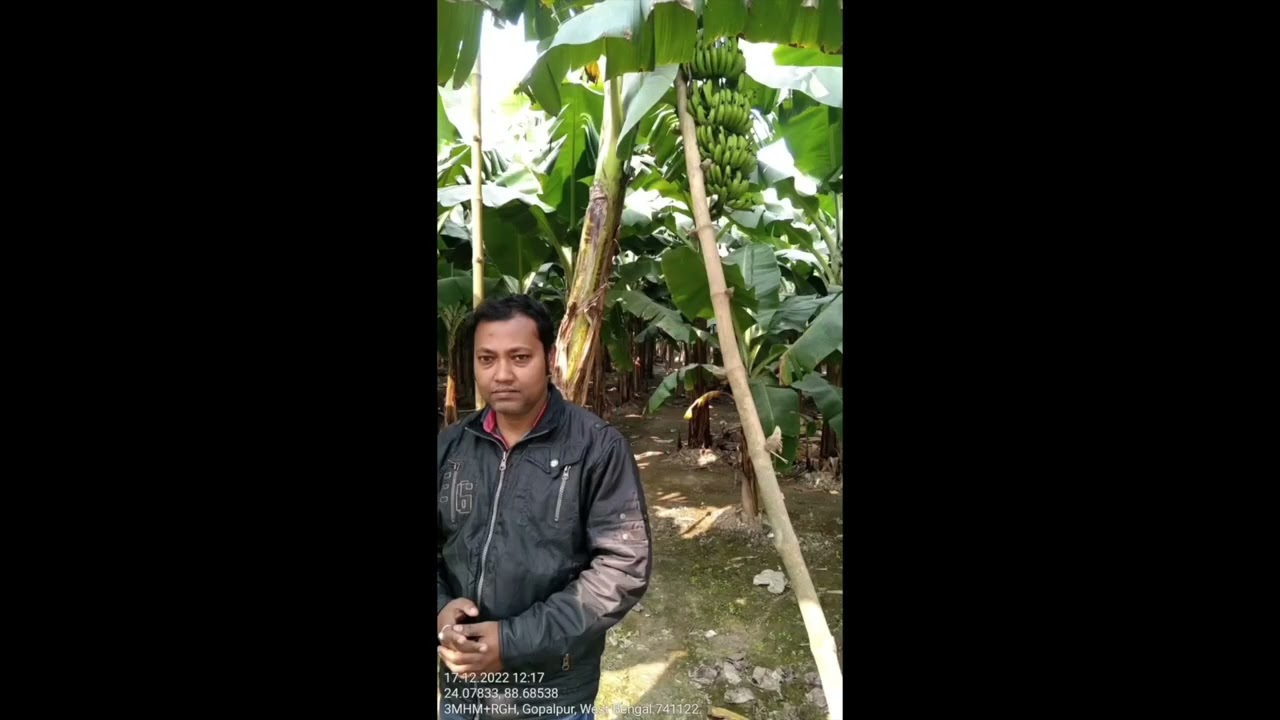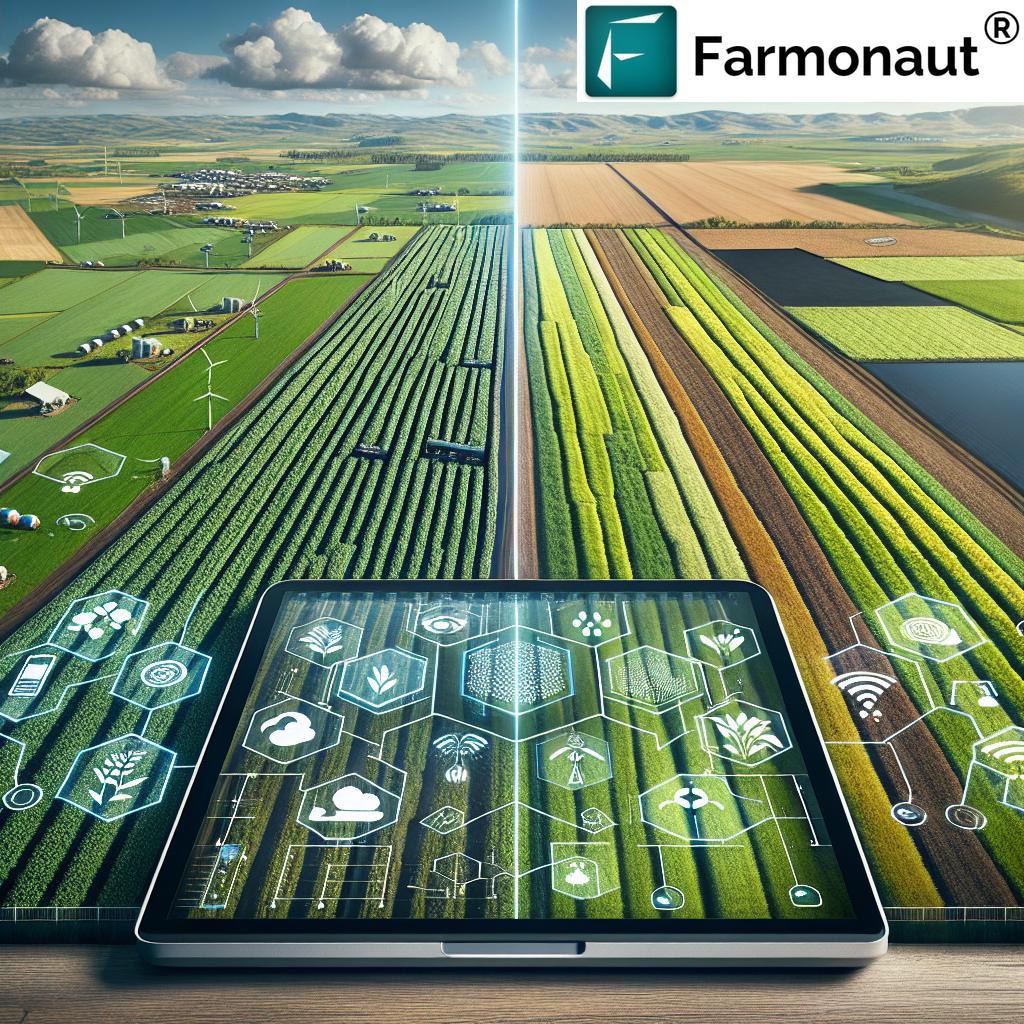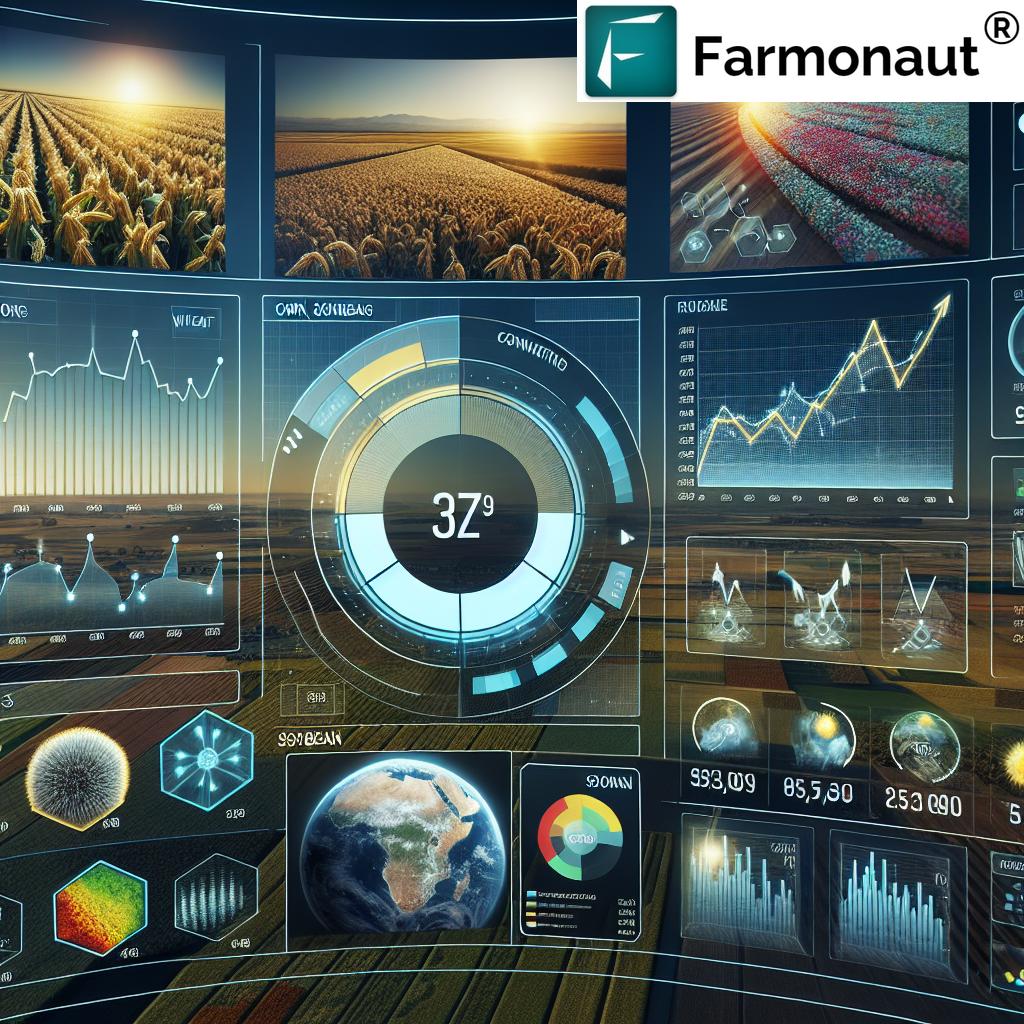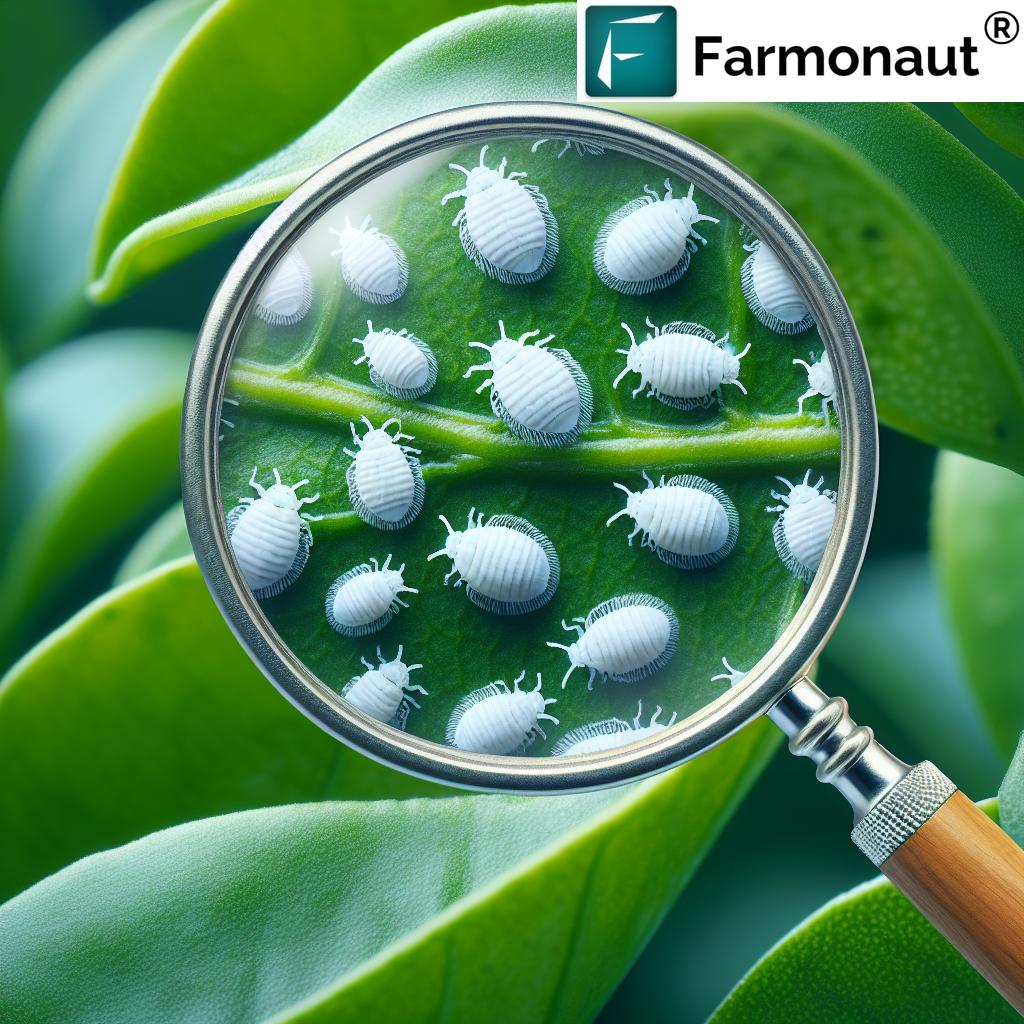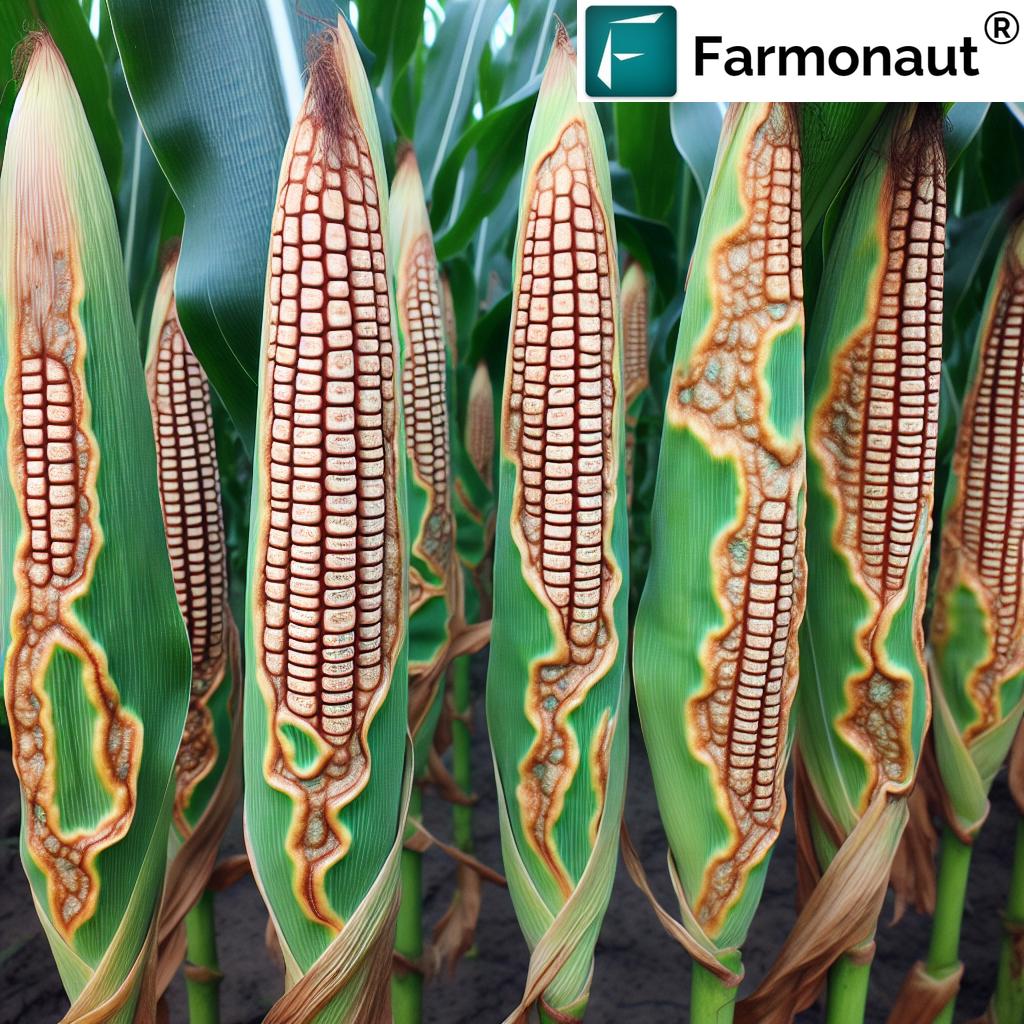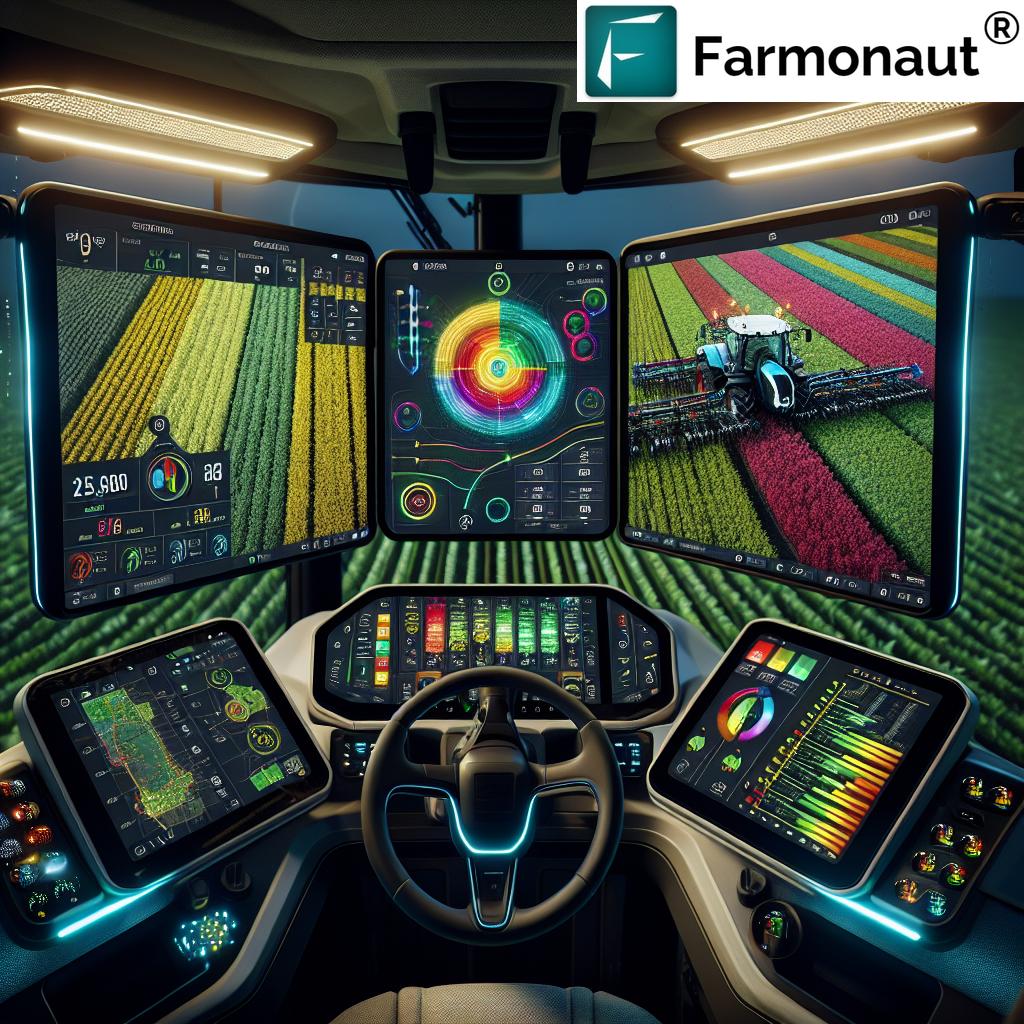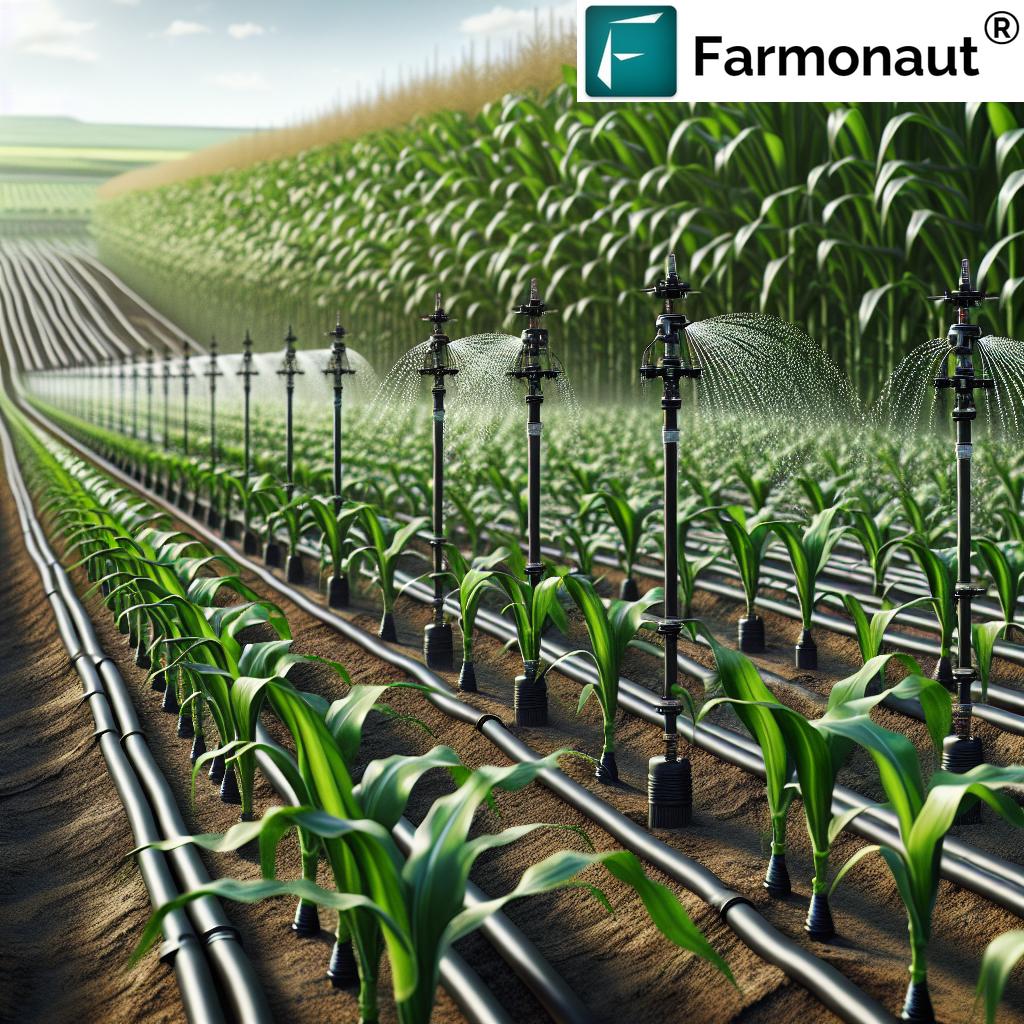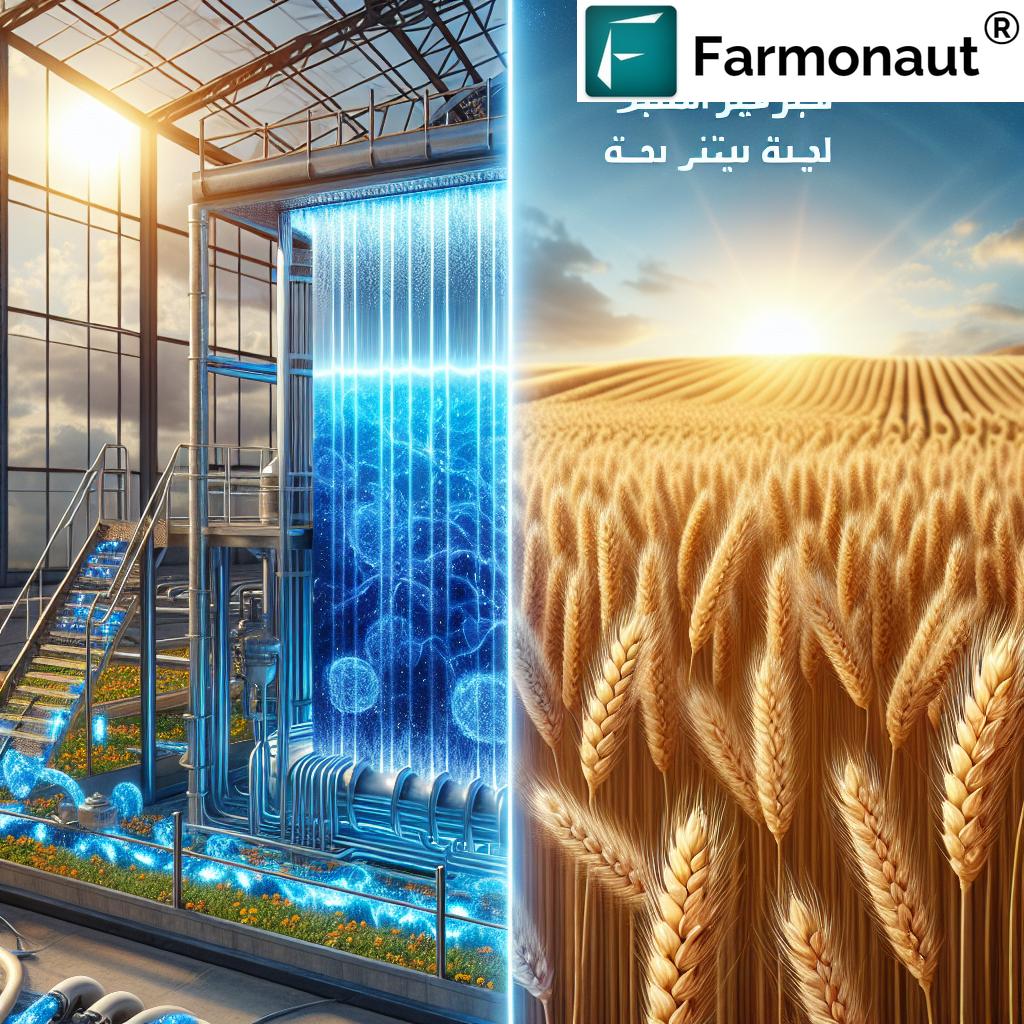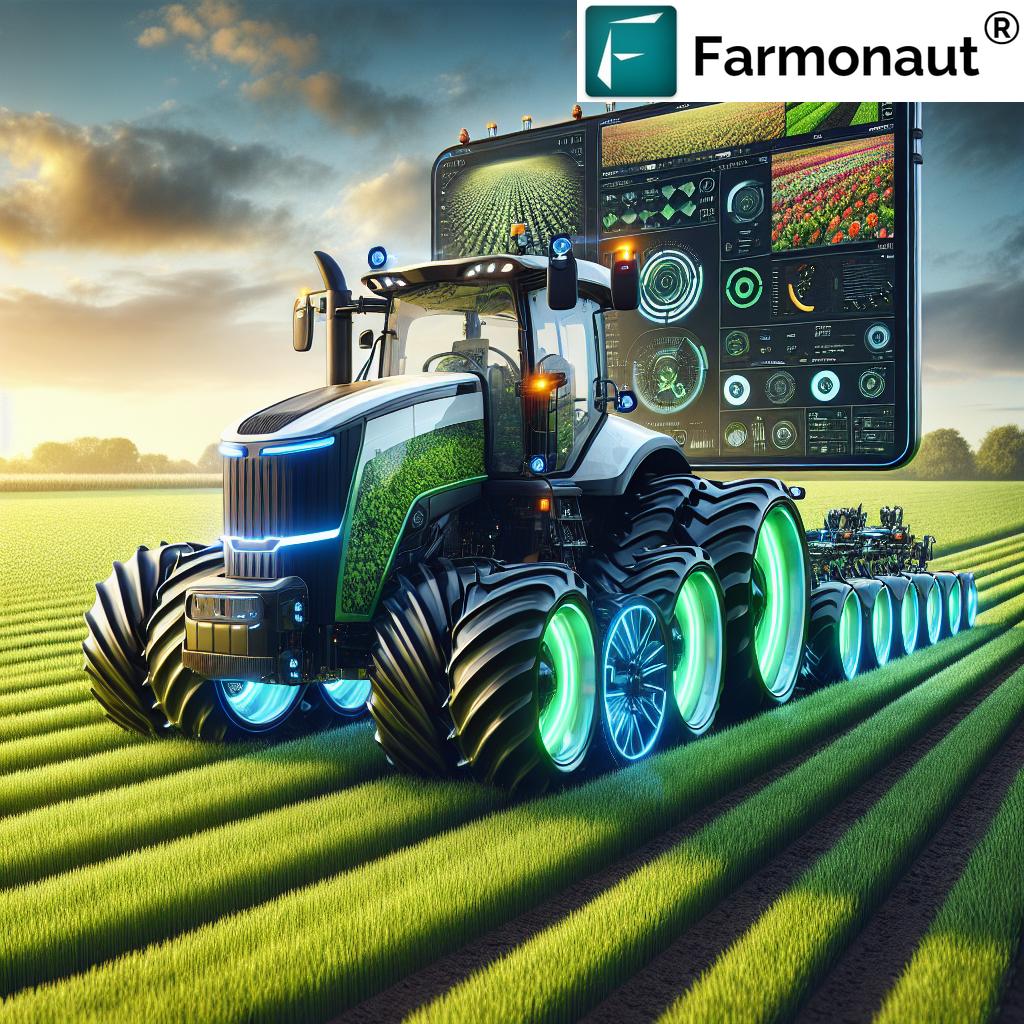Precision Grow Drone-Based Crop Analysis: Boost Yields Fast
Table of Contents
- Introduction: Precision Agriculture & Drone-Based Crop Analysis
- Trivia: Drones & Precision Data in Agriculture
- Advancements in Drone Technology for Crop Monitoring
- Applications of Drones in Precision Agriculture
- Benefits of Drone-Based Crop Analysis
- Comparison Table: Traditional vs. Drone-Based Crop Analysis
- Farmonaut: Revolutionizing Farm Management with Satellite & AI
- Challenges and Key Considerations in Drone Adoption
- Future Trends: AI and Drone Crop Health Monitoring
- Getting Started with Farmonaut: Apps & API Integration
- Farmonaut Subscription Plans
- Frequently Asked Questions (FAQ)
- Conclusion: Embracing the Crop Analysis Revolution
Introduction: Precision Agriculture & Drone-Based Crop Analysis
As the global population rises and the demand for efficient, sustainable farming intensifies, cutting-edge solutions have taken center stage. Today, precision agriculture is undergoing a true transformation with the integration of drone technology in agriculture.
We are witnessing a new agricultural revolution where drones, or unmanned aerial vehicles (UAVs), equipped with advanced cameras and sensors, deliver a comprehensive and efficient means to monitor, analyze, and manage crop health at scale. With the help of real-time data analysis and AI-driven decision-making, farmers can boost yields, enhance resource management, and promote sustainable farming practices—all with unprecedented accuracy and speed.
In this deep-dive, we’ll explore how drones for crop analysis are shaping the future of precision agriculture, the latest technological advancements, practical applications, key benefits, and how solutions like Farmonaut are making data-driven, high-yield farming accessible to all.
The Synergy of Technology & Innovation in Modern Farming
The marriage of agricultural drone applications and precision agriculture brings farming into a digital era. Farmers now have access to technologies that gather comprehensive crop analysis and detailed field data—far surpassing what traditional methods could ever deliver. From multispectral imaging in farming to AI in precision agriculture, real-time monitoring is more precise, efficient, and actionable than ever before.
Key Advancements in Drone Technology for Crop Monitoring
Let’s examine the evolution of drone technology in agriculture and the specialized tools that empower farmers with accurate, data-driven crop health monitoring.
Modern Drone Sensors: Multispectral, Thermal, LiDAR, and RGB Cameras
Modern agricultural drones come equipped with an impressive array of sensors and imaging systems to ensure comprehensive crop analysis and precise monitoring:
- Multispectral and Hyperspectral Cameras:
These cameras capture images across multiple wavelengths, allowing us to assess plant health. They are vital for detecting stress factors such as nutrient deficiencies, water stress, or pest infestations.
(Example use: Analyzing NDVI—Normalized Difference Vegetation Index—informs on plant vigor and early signs of disease.) - Thermal Imaging:
Thermal cameras detect temperature variations in crops, providing insights into water stress and the presence of disease. This enables timely intervention for irrigation or treatment. - LiDAR Sensors (Light Detection and Ranging):
LiDAR uses laser pulses to create 3D maps of terrain, assisting farmers in topographical analysis and designing effective planting strategies. - RGB Cameras (High-resolution Visual Imaging):
RGB cameras capture detailed images of crops for the identification of physical damage and growth patterns.
By deploying these advanced sensors, drones give us the power to analyze crops with unmatched accuracy and efficiency—essential in today’s high-stakes agriculture.
Applications of Drones in Precision Agriculture
The integration of drone technology in agriculture unlocks a spectrum of practical, high-impact applications at every stage of the agricultural process:
-
Crop Health Assessment & Early Stress Detection
By analyzing multispectral and thermal images, drones readily detect early signs of diseases, nutrient deficiencies, and pest infestations. This timely detection drastically improves our response times and reduces crop losses. -
Soil and Field Analysis
With drone-mounted sensors, we can analyze soil properties, including moisture levels and nutrient composition. These insights inform planting strategies, irrigation planning, and ultimately enable more precise farming. -
Variable Rate Application (VRA) & Drone Crop Spraying
Drones equipped with intelligent spraying mechanisms allow us to apply fertilizers, pesticides, and herbicides with pinpoint accuracy. This targeted application means reduced chemical usage and promotes more sustainable farming practices. -
Irrigation Management
Drones are invaluable in monitoring soil moisture levels, which supports efficient irrigation scheduling. We can thus conserve water, optimize crop growth, and avoid overwatering or underwatering. -
Yield Estimation and Mapping
By analyzing crop health, plant density, and growth patterns, drones enable accurate yield predictions, informing harvest planning and logistics for farms of all sizes.
Adopting drone-based crop analysis elevates every aspect of farm management, helping us make informed decisions and maximize our returns.
Enhance Every Aspect of Farm Management
- Interested in satellite-based, real-time health monitoring? Explore Farmonaut’s crop plantation advisory and remote farm management platform here.
- Optimize your logistics and fleet resources: Read about Farmonaut’s Fleet Management solutions for agribusinesses.
- Reduce your environmental impact: Discover Farmonaut’s Carbon Footprinting platform for sustainable agriculture.
- Ensure transparent, blockchain-verified supply chains: Farmonaut’s Product Traceability solutions utilize blockchain for full product tracking.
- Access reliable crop loan and insurance verification: Farmonaut’s services provide satellite-based verification for streamlined financial access.
Benefits of Drone-Based Crop Analysis in Precision Agriculture
Why Are Drones Transformative in Modern Farming?
Here’s how drones for crop analysis deliver sustainable, data-driven benefits to farmers globally:
- Increased Efficiency and Productivity:
Drones monitor large areas quickly, automate repetitive farm tasks (like spraying), and unleash farmer resources for more critical roles. - Cost Savings:
Precision application of fertilizer and pesticide inputs minimizes waste, cutting costs significantly. Targeted drone crop spraying can reduce chemical usage by over 75% compared to manual application. - Environmental Sustainability:
By reducing pesticide usage and enabling targeted resource management, drones support sustainable farming practices and reduce environmental impact—including lower CO2 emissions. - Data-Driven Decision-Making:
Drones provide comprehensive, accurate data that empowers farmers to make informed decisions about irrigation, nutrient management, pest control, and timing. - Crop Health Monitoring & Early Disease Detection:
Advanced imaging systems help us detect diseases, water stress, and nutrient deficiencies before they cause significant crop loss. - Supports Precision Irrigation & Water Savings:
Thermal and multispectral sensors identify areas needing irrigation, helping conserve water—a vital asset. - Yield Optimization:
Analyzing growth patterns and input requirements with drones ensures each part of our farm achieves optimal output.
Together, these advantages combine to create a more sustainable, efficient, and profitable agricultural landscape.
Comparison Table: Traditional Crop Analysis vs. Drone-Based Crop Analysis
| Analysis Parameter | Traditional Methods (Estimated Values) | Drone-Based Analysis (Estimated Values) |
|---|---|---|
| Time Required for Analysis | 5-10 days for large farms | 1-2 hours (1,000 acres/day scanned) |
| Cost per Hectare | $20-50/hectare | $5-15/hectare |
| Data Accuracy (%) | 60-75% | 90-98% |
| Yield Improvement (%) | 5-8% | 12-20% |
| Environmental Impact (CO2 Emissions) | Higher, due to excess input use | Lower (targeted input reduces emissions) |
Farmonaut: Revolutionizing Farm Management with Satellite & AI
While drone-based analytics bring precision and actionable data to crop monitoring, platforms like Farmonaut extend these benefits by making crop health monitoring and farm management with drones and satellites accessible, scalable, and affordable for everyone.
Farmonaut’s Technologies: Bringing Precision Agriculture to Your Fingertips
- Satellite-Based Crop Health Monitoring: Leverage multispectral satellite images for real-time monitoring of crop vegetation (NDVI), soil moisture levels, and input requirements. Farmers and agribusinesses can make data-driven decisions about irrigation, fertilizer usage, and pest management—all to maximize yields and minimize waste.
- Jeevn AI Advisory System: Harnesses AI and machine learning to provide personalized farm management strategies, weather forecasts, and real-time actionable advice.
- Blockchain-Based Product Traceability: Ensures every crop’s journey from field to fork is transparent and secure, benefitting supply chain partners and consumers alike.
- Fleet and Resource Management: Allows effective monitoring, allocation, and optimization of on-farm vehicles and resources, thus reducing costs and boosting operational efficiency.
- Carbon Footprinting: Equips farms and agribusinesses with tools for real-time monitoring of emissions, informing sustainability reporting and compliance efforts.
Farmonaut helps us digitally transform our farms, blending the power of drones, satellites, AI, and blockchain into a single, easy-to-use platform accessible on web, Android, and iOS.
Challenges and Key Considerations in Adopting Drone-Based Crop Analysis
Before embracing drones, it’s important for farmers and agribusinesses to consider:
-
Regulatory Compliance:
Operating drones (UAVs) is subject to local and national regulations. Some regions require pilot licenses or restrict drone altitude and areas of use. Stay updated with your country’s drone laws. -
Initial Investment:
High-quality drones equipped with advanced sensors entail up-front purchase and maintenance costs, potentially posing a barrier especially for smaller farms. -
Data Management & Analysis Expertise:
Data interpretation requires a certain level of expertise. Training or hiring agricultural data analysts may be necessary for those new to precision agriculture. -
Integration with Existing Systems:
Ensuring that drone-collected data can be readily used alongside other farm management apps—like Farmonaut—is crucial for seamless operations. -
Weather and Environmental Conditions:
Drone flights may be delayed or affected by rain, strong winds, or extreme temperatures.
Despite these challenges, the long-term savings, boosts to yields, and enhanced sustainability strongly favor the adoption of drone-based crop analysis.
Next-Generation Trends in Drone-Based Crop Analysis
Looking ahead, precision agriculture continues to evolve rapidly thanks to emerging innovations:
-
AI Integration for Enhanced Crop Health Monitoring:
Powerful AI algorithms now analyze imagery for subtle stressors, spot diseases sooner, and recommend optimized treatment schedules. This makes ai in precision agriculture a game-changer for yield security. - Sensor Technology Advancements:
Expect multispectral and hyperspectral imaging to become even more detailed, with sensors capturing data at finer resolutions and across additional wavelengths. -
Increased Accessibility & Affordability:
As drone technology and satellite data platforms become less costly and more user-friendly, we anticipate widespread adoption—empowering not just large farms, but also smallholders and cooperatives.
Farmonaut’s subscription model ensures affordability for every scale of operation. -
Integration with Other Digital Tools:
Data from drones and satellites will seamlessly sync with web, mobile apps, and even blockchain for real-time decision-making and supply chain tracking.
Getting Started with Farmonaut: Apps & API Integration
Ready to harness the power of precision agriculture, whether with satellite technology or in complement with drone-based monitoring? Farmonaut offers simple, flexible onramps:
- Mobile Apps (Android/iOS): Download for Android | Download for iOS
- Web App: Log in instantly from any browser.
- API for Developers: Access the API and developer documentation to integrate satellite-based health monitoring and precision weather data.
- Flexible Subscriptions: Affordable plans for farmers, cooperatives, large agribusinesses, and institutions—pay only for hectares or features you need, and scale up as you grow!
Farmonaut Subscription Plans
Choose a subscription that fits your scale and ambition. Instant digital transformation for your fields!
Frequently Asked Questions (FAQ)
-
Q: How does drone technology in agriculture differ from using satellites?
A: Drones provide higher-resolution, close-up data, ideal for crop health monitoring, disease detection, and precise input application. Satellites cover wider areas and deliver broader analytics. Combining both offers maximum insight. -
Q: Is drone-based crop analysis only for large farms?
A: No, advances in drone technology and service models have made precision agriculture accessible for smallholders, cooperatives, and any scale of operation—especially with platforms like Farmonaut. -
Q: What skills are required to implement drone crop monitoring?
A: Operating drones requires basic piloting skills and familiarity with flight safety and regulations. For crop analysis, basic data interpretation helps, though user-friendly platforms (like Farmonaut) ease this with straightforward dashboards and summaries. -
Q: How can detailed drone-collected data be used with satellite imagery?
A: Both data types are complementary. Use drones for focused local detail and satellites for field-wide monitoring—then combine reports to enhance decision-making at every level of your operation. -
Q: Does Farmonaut sell drones or agricultural hardware?
A: No. Farmonaut provides digital farm management solutions, leveraging satellite, AI, and blockchain technologies to monitor crops, manage resources, and support sustainability—no physical hardware or input sales. -
Q: How does precision agriculture help with sustainability and environmental stewardship?
A: Data-driven monitoring and targeted applications mean we use fewer chemicals, water, and resources. This cuts input costs and environmental impact, driving higher yields and long-term farm viability. -
Q: Where can I learn more about integrating blockchain in agriculture for traceability?
A: See Farmonaut’s Product Traceability solution—ensuring security and transparency in food supply chains.
Conclusion: Embracing the Future of Crop Analysis with Precision Grow Drone Technology
The rise of precision agriculture—bolstered by drone-based crop analysis and satellite-backed platforms—marks a turning point for farmers, agribusinesses, and entire communities. By combining advanced multispectral imaging, thermal cameras, AI algorithms, and comprehensive farm management software such as Farmonaut, we are empowered to:
- Monitor crop health in real time and detect pest, disease, or stress early
- Increase yields fast through data-driven interventions
- Reduce costs and environmental impact while promoting true sustainability
- Make informed decisions from planting to harvest, supported by timely, accessible analytics
The future of agriculture is bright, interconnected, and digital. Now is the time to adopt innovative, accurate crop health monitoring practices—giving us a competitive edge in yield, quality, and sustainability.
Ready to transform your farm’s future? Start your Farmonaut journey here, or tap into our APIs for integrated, powerful crop analysis—and step confidently into the next generation of farming.








